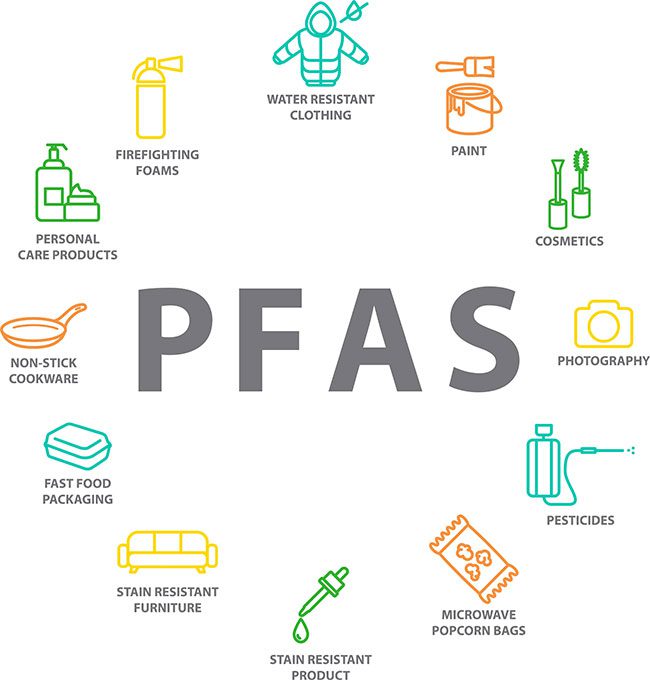Per- and polyfluoroalkyl substances (PFAS), commonly referred to as “forever chemicals,” are ubiquitous in our daily lives. From school uniforms and food packaging to cosmetics and personal care products, PFAS have infiltrated our environment, including our food and drinking water. Now, a new study has found that certain types of PFAS may penetrate human skin.

Products containing forever chemicals.
The research was conducted by environmental chemists from the University of Birmingham, UK, and published in the June issue of the journal Environment International. Dr. Stuart Harrad, one of the lead authors of the study, explained: “We studied 17 types of PFAS found in products that come into direct contact with human skin. The results show that 11 of them have the potential to cross the skin barrier.”
In the laboratory, the research team used a 3D human skin model to test the absorption capabilities of PFAS. Dr. Oddný Ragnarsdóttir, a co-author of the study currently working at the University of Iceland in Reykjavik, shared: “We found that PFAS with shorter carbon chains, ranging from 4 to 7 atoms, seem to be absorbed more easily. For instance, approximately 59% of perfluoropentanoic acid (PFPeA) and 49% of perfluorobutane sulfonate (PFBS) penetrated the skin and reached simulated blood fluid in the body.”
However, Dr. Miriam Diamond, an environmental scientist from the University of Toronto who was not involved in the study, warned that laboratory results may not fully reflect real-world scenarios. “The thickness of human skin varies in different areas of the body, so the absorption of PFAS will also vary depending on the contact location”, she stated.
Although the doses of PFAS used in the experiments were higher than typical levels of exposure in daily life, Dr. Ragnarsdóttir emphasized the importance of consumer awareness: “We wear clothes for many hours each day. If you are wearing something that contains PFAS, that is a significant source of exposure.”
This research raises new questions about the safety of PFAS-containing products we use daily. While regulatory agencies like the U.S. Environmental Protection Agency (EPA) have set guidelines for PFAS limits in drinking water, controlling dermal exposure remains an area that requires more attention in the future.



















































